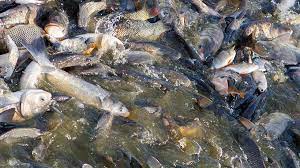
THE aquaculture industry requires a stand-alone policy to enforce the observation of key operational standards for hatchery facilities such as biosecurity protocols, quality fish seed production, feed regulations and input standards and services that gives it the competitive edge that attracts investors.
Fisheries and Aquaculture Resources Production Department expert in the Ministry of Lands, Agriculture, Fisheries, Water and Rural Development Ms Lorraine Kudakwashe Salimu said the industry was grappling with challenge of failing to woo financiers to inject funds to sustain the business.
“Fish farming is not a quick money-making scheme like other farming projects where you know that in one season you will have a big profit. Most agriculture financing models are underpinned on the loanee paying back the money with some interest after the first season, which cannot be done for aquaculture so you tend to have less interested parties in the business that are able to aid in loan facilities for fish farmers,” she explained.
Ms Salimu observed that there was currently no policy addressing those needs and if there was, it was absorbed in some parts of environmental and wildlife management policies that are not specific to aquaculture but centred on conservation.
Meanwhile, statistics availed by the Lands, Agriculture, Fisheries, Water and Rural Development have shown that the aquaculture sector recorded a 34 percent decline in production for the period between 2017 and 2022 due to high costs of production and the fragmented approach to business in the industry.
This was despite enjoying a 33 percent growth between 2017 and 2020 before drastically declining by 67 percent in 2021. This was, however, reversed once again after Government intervened to trigger a 25 percent upward swing in 2022.
The Government is currently pulling out all stops to ensure the country achieves a US$1 billion fish industry by 2030 with eight breeding sites and 460 fish ponds having already been established countrywide to guarantee the availability of enough fingerlings to meet the anticipated high demand the project will generate.
In 2017, the Government launched the Command Fisheries Programme and supplied fingerlings to a number of dams across the country with the Zimbabwe Parks and Wildlife Management Authority (Zimparks) indicating that if all dams were fully utilised for fish production, the aquaculture industry could support in excess of 1,2 million people at the primary production level.
The Command Fisheries Programme was designed to contribute towards the provision of food, promote good health among citizens through improved diets while alleviating poverty at the same time.
The country’s dams have the capacity to produce at least 1,5 tonnes of fish per year if they fully utilised, which can produce meaningful revenue for citizens involved both directly and indirectly in the industry.
Eight breeding sites at places that included Henderson Research Station in Mazowe, Murehwa, Bubi, Makoholi and Matopos to name some of them were established.
The move will also contribute to the achievement of the national agenda to replace imports with locally produced products through improved food and nutritional security, employment creation and improved incomes.
Additionally, the Government trained people on how to make fish feeds according to their different agro-ecological regions.
Government is targeting to stock 1 200 dams with potential to increase Zimbabwe’s consumption rate per capita to 13 kilogrammes by the year 2025.
The introduction of community gardens that accommodate two fish ponds and the various dam projects currently underway across the country has given birth to many fish hotspots that have the potential to turn commercial and generate incomes for the participating households.
Aquaculture is the fastest growing food producing sector with farmers capable of producing fish more efficiently and cost effectively.




